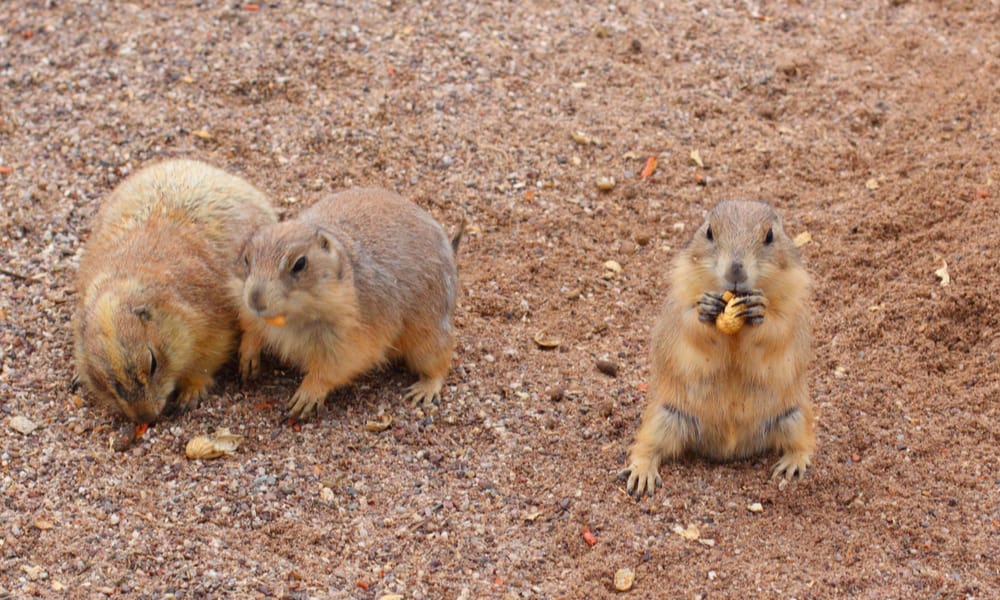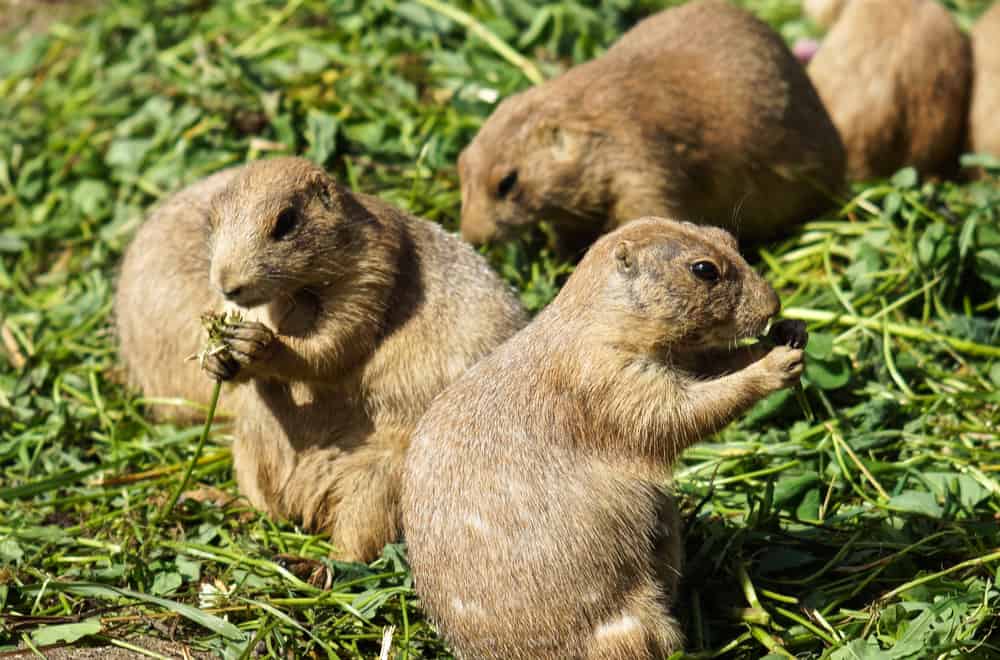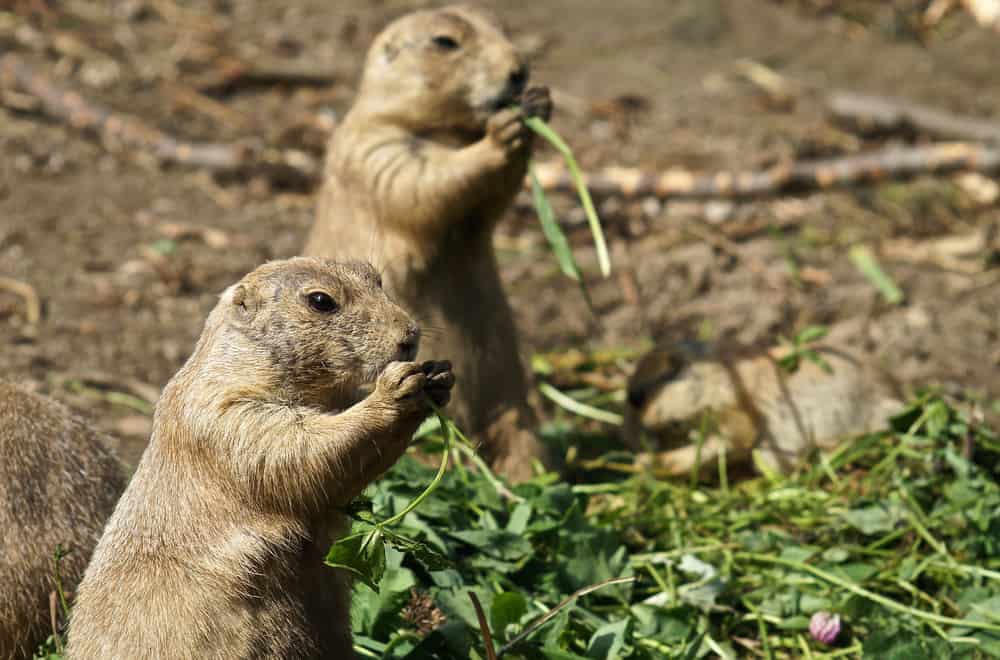When someone mentions ‘lemming’ the first thing that comes to your mind is probably the popular myth surrounding lemmings, which claims that these little critters are suicidal. Well, that’s just a fallacy and we’ll come back to it later. For now, let’s answer one of the most important questions about lemming which is, “What does lemming eat?”
Lemming Habits and Biology
Lemming, also known as Lemmus lemmus, is a tiny rodent that belongs to the Cricetidae family. It is one of the smallest in the family, living around the Arctic circle and sometimes in the Tundra biomes.
There are six subspecies of lemmings that further give rise to other subspecies such as true lemmings, bog lemmings, wood lemmings, southern bog lemmings, and yellow steppe lemmings.
Their sizes vary from species to species, with the majority being just between 3 and 6 inches long and weighing between 0.05 and 0.07 pounds.
Like most rodents, lemmings have a round body, covered in thick fur. Different species have different fur colors, but mostly it is gray or brown. Their ears, tails, and limbs are usually very small, and this helps them to conserve heat and stay warm. They also have sharp claws and teeth, which makes it easier for them to tear out and munch on roots under their underground tunnels.
Lemmings love to live in solitary. The only time you will see more than one in one place is when they are migrating or when they are mating.
But this doesn’t mean they are soft or they let other animals step on their toes. Lemmings are quite aggressive. Whenever they sense danger, they become very hostile toward their predators, something that sometimes gets them into trouble with other animals.
Lemmings mature very fast and will usually be ready to reproduce within the first month of being born. They are enthusiastic breeders and can produce a young one every 28 days with a gestation period of 20 days.
The mother gives birth in a hole or tunnel, which enables the young ones to survive the cold arctic winter. She also provides food for them until they are old enough to start fending for themselves. Most lemmings live for about 18 to 24 months, but some species have been found to live for up to 3 years.
To learn more about lemmings, watch this video:
What Does Lemming Eat in the Wild?
Lemmings are herbivores, mainly surviving on vegetation. However, during the cold winter months, there is a scarcity of food and so they eat whatever they find in large quantities to prevent nutritional deficiencies. During this season, lemmings will spend the best part of their day looking for food. Some studies show that lemmings even eat other lemmings when food is limited.
For the most part, lemmings will choose their diet based on what is currently available in their habitat. They do not hibernate when the weather gets cold. Rather, they stay active burrowing through the snow looking for something to eat. Their incisors grow continuously, enabling them to eat much tougher vegetation.
Watch this short video to see how a lemming uses its sharp incisors to eat:
What Do Lemmings Like to Eat?
Lemming’s diet mainly consists of:
- Mosses
- Grasses
- Berries
- Bulbs
- Shoots
- Lichens
- Leaves
- Roots
- Bark
- Sedges
- Fungi
- Shrubs
How Lemmings’ Diet Benefits the Ecosystem
- By feeding on fungi, lemmings help minimize fungal diseases that affect plants. Such diseases attack plants when they are still young or after they are harvested, resulting not only in food shortages but also in economic losses for the agricultural sector.
While using fungicides helps reduce the impact of fungal diseases, lemmings do play an important role in truly bringing fungi numbers down, and this goes a long way in minimizing plants’ fungal diseases.
- Lemmings also reduce the effects of invasive plants. As mentioned, a big percentage of their diet comprises vegetation, and part of this includes small invasive plants. Now, invasive plants have many negative effects on the environment – they alter the native habitats, kill native species and make them extinct, and some may even cause diseases in humans.
Facts About Lemmings
1. Lemmings Do Not Commit Suicide
Contrary to what many people believe, lemmings are not suicidal. The myth that speculates that every few years lemmings jump of seaside cliffs to kill themselves is just that – a myth. It says that instincts drive these little creatures to jump off a cliff when their population becomes too large.
But this fallacy is linked to some actual lemming behaviors. These critters reproduce heavily and their population spikes every two to three years. But then again, this doesn’t drive them to kill themselves. Instead, they migrate to a new area. Large groups of lemmings will set out to look for a new place to stay when the area they are in gets too crowded.
But why do people still believe in the myth?
Well, because the film industry has made them to. This whole fallacy of lemmings killing themselves emerged when Walt Disney produced a series featuring lemmings jumping off a cliff, detailing their strange urge to commit mass suicide.
Later, it was found that the lemmings who were allegedly committing suicide were actually thrown off the cliff by the filmmakers. So, no, lemmings are not suicidal. If their population becomes unsustainably large, some of them will move to a new area; they won’t try to bring their numbers down by destroying themselves.
2. Lemmings Can Swim
Lemmings are good swimmers. If they come across a water body such as a lake or river during their migration, they will attempt to cross it. Unfortunately, a few of them drown. Again, it’s not suicide! They are just trying to get to the other side for greener pastures.
The reason why they die is that sometimes the water body they are crossing is too wide, getting them exhausted before they are able to cross it. When they arrive in their new home, however, those who made it reproduce quickly, and soon, the new group splits and migrates to somewhere else.
3. Lemmings Communicate By Marking Scent
Lemmings are known to make loud squeaky noises when predators threaten their lives, but that’s not the only way they communicate with each other. Studies have shown that lemmings of the same species can talk to each other using scent marking techniques.
4. Brightly Colored Lemmings are Aggressive
Most lemming species are grey or brown. But some have really bright colors like yellow or yellow-brown, and these have been found to be pretty aggressive. They will even attack animals that are five times their size. Don’t believe us? Check out this video of a lemming chasing a cat!
5. Some Lemmings Change Their Coat Color Based on the Season
While the majority of lemmings will maintain their coat color all year long, some species like the collared lemming will undergo changes during different times of the year.
In the summer, their coats will appear gray with a dark line running along the back, and come winter, their coats will turn white. Collared lemmings are the only species of lemmings that undergo this unique transformation.
6. Lemmings Become Sexually Mature Much Quicker in Summer
Young lemmings will mostly become sexually active at the age of 5 to 6 weeks. But during summer, some lemmings have been found to become fertile at only 3 weeks, and females will become fertile again as soon as they have given birth. A single female usually gives birth to 2 to 13 young ones, but on average, the litter size will range between 7 and 8.
7. Lemmings Spend Most of Their Lives in Tunnels
Lemmings, like most rodents, live in underground tunnels. These tunnels protect them from predators and help them stay warm when it gets cold. It is also where they get their food.
However, toward the end of fall when the temperatures dip and the ground starts to freeze, digging through the frozen tunnels becomes difficult and most lemmings will look for food on the surface.
Some lemmings become prey to predators like great gray owls because they can no longer hide in the tunnels, which brings their population down. Luckily, lemmings reproduce quickly and as soon as the breeding season begins, the population goes up again.
8. Aggression is Part of the Mating Process
Lemmings generally don’t depend on each other to live. However, they will encounter each other once in while for mating and when this happens, they become aggressive toward one another.
Male lemmings will usually box and wrestle for a mate and the stronger one will often take the female. Nonetheless, lemmings are monogamous. They will hop onto another female shortly after fertilizing another.
Summary
Lemmings are herbivores who spend the best part of their lives eating roots, sprouts, bulbs, and just about any plant and vegetation they bump into. They have sharp teeth that enable them to easily cut through plant matter. They are also willing breeders and will often migrate to new areas when their population becomes unsustainably large.


